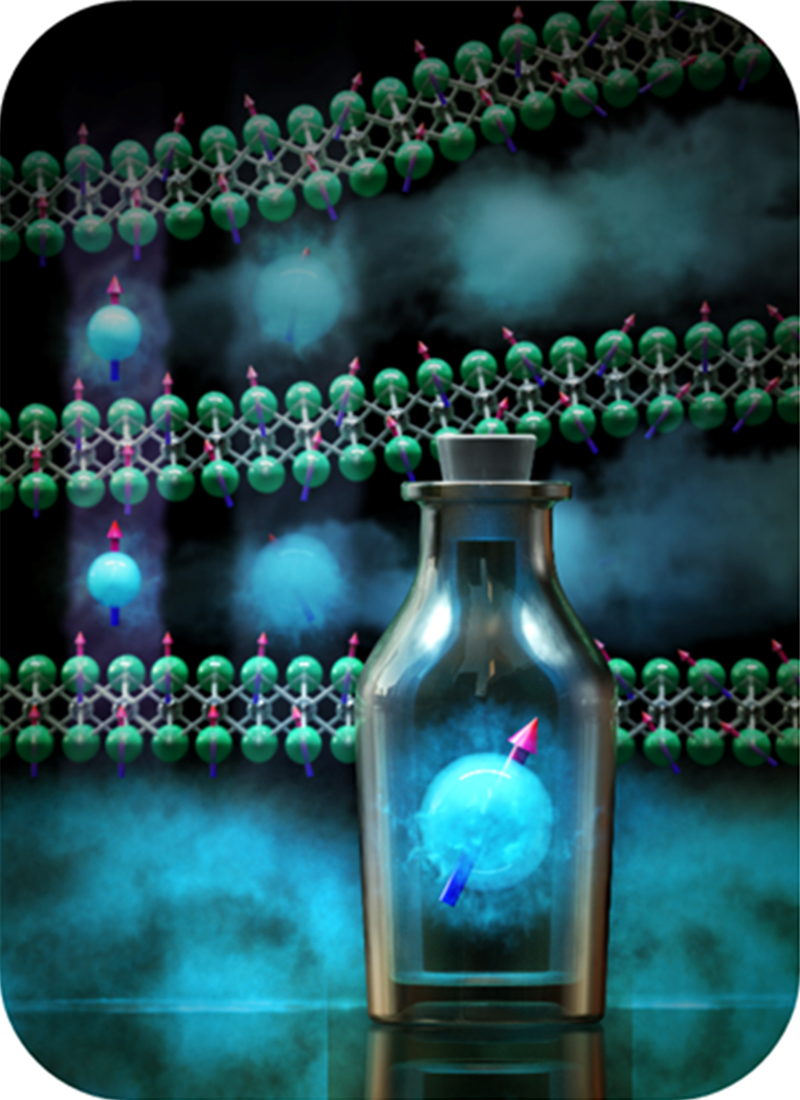커뮤니티
부경투데이
- 국립 부경대학교의 다양한 모습과 소식을 접하시면 부경대학교가 한번 더 가까워집니다.
| 네이처 자매지에 실렸다(Thesis on Nature Magazine's Stablemate) | |||
| 작성자 | 대외협력과 | 작성일 | 2020-03-31 |
| 조회수 | 712 | ||
| 첨부파일 | |||
| 네이처 자매지에 실렸다(Thesis on Nature Magazine's Stablemate) | |||||
 |
대외협력과 |  |
2020-03-31 |  |
712 |

|
현대산업의 필수소재인 자성체에 적용할 수 있는 새로운 자성물질을 개발한 연구결과가 나와 주목받고 있다.
자성체는 하드디스크, 발전기, 전기모터 제작 등 현대산업에 사용되는 필수소재다. 자성체 제작에는 우수한 자석 성질을 갖는 희토류 원소가 주로 쓰이는데, 희토류 원소는 고가에다 불안정한 공급 등의 문제로 이를 대체할 수 있는 자석 소재 개발의 필요성이 지속적으로 제기돼 왔다. 황 교수 연구팀은 이번 연구에서 전자들이 층간에서 주변 양이온과 강한 상호작용(exchange interaction)을 통해 강자성 특성이 발현되는 2차원 전자화물 자석 소재(Gd2C)를 개발했다. 이와 함께 2차원 층상구조에서 층간의 빈 공간에 독립적으로 위치하면서 고유의 자기모멘트(magnetic moment)를 갖는 격자 간 음이온 전자의 존재를 세계 최초로 규명하는 데 성공했다. 황 교수는 “이 연구에서 제시된 전자화물 소재에서의 새로운 자성특성 발현 원리를 이용하면 자석 소재 합성에 필요한 고가의 희토류 원소 사용을 줄이고, 저가 원소로 이루어진 차세대 자성소재와 응용물성 개발도 가능할 것으로 기대한다.”고 말했다. 한편 이번 연구결과를 담은 논문 ‘Ferromagnetic quasi-atomic electrons in two-dimensional electride’는 네이처 자매지인 국제학술지 <네이처 커뮤니케이션즈>에 지난 23일 게재됐다. <부경투데이>
The research results that developed a new magnetic material that can be applied to the magnetic substance, which is an essential material of the modern industry, are attracting public attention. Hwang Jae-yeol, who is a professor of Physics department in Pukyong National University, recently announced on March 31 about his thesis worked together with the professor Kim Sung-wung of Energy Science department in Sungkyunkwan University that it was successful in synthesizing the first magnetic material with a ferromagnetic property and revealing the principle of implementing magnetism. Magnetic substances are essential materials used in modern industries such as hard disks, generators, and electric motors. Rare earth elements having excellent magnetic properties are mainly used for production of magnetic materials, and the necessity of developing a magnet material that can replace these rare earth elements due to problems such as high price and unstable supply has been continuously raised. In this study, Professor Hwang's team developed a two-dimensional electride magnet material (Gd2C) in which electrons manifest ferromagnetic properties through strong interaction with surrounding positive ion between layers. At the same time, he succeeded in identifying the existence of interstitial anionic electrons (IAEs) between lattice framework, which have exotic magnetic moments, independently located in empty spaces between layers in a two-dimensional layered structure. Professor Hwang said, "It is expected that the use of presenting principle of the new magnetic property in the electride material proposed in this study will reduce the use of expensive rare earth elements required for the synthesis of magnetic materials, and also enable the development of next-generation magnetic materials and physical properties made of low-cost elements.” Meanwhile, the thesis ‘Ferromagnetic quasi-atomic electrons in two-dimensional electride’, which contains the results of this research, was posted in an international journal <Nature Communications> on March 23, which is a stablemate of Nature magazine. <Pukyong Today> |
 황재열 교수(물리학과).jpg
황재열 교수(물리학과).jpg
 부경대학교 황재열 교수(물리학과·사진)는 성균관대학교 김성웅 교수(에너지과학과)와 공동으로 강자성 특성을 갖는 전자화물 자성물질을 처음으로 합성하고, 자성 구현 원리를 밝히는 데 성공했다고 3월 31일 밝혔다.
부경대학교 황재열 교수(물리학과·사진)는 성균관대학교 김성웅 교수(에너지과학과)와 공동으로 강자성 특성을 갖는 전자화물 자성물질을 처음으로 합성하고, 자성 구현 원리를 밝히는 데 성공했다고 3월 31일 밝혔다.